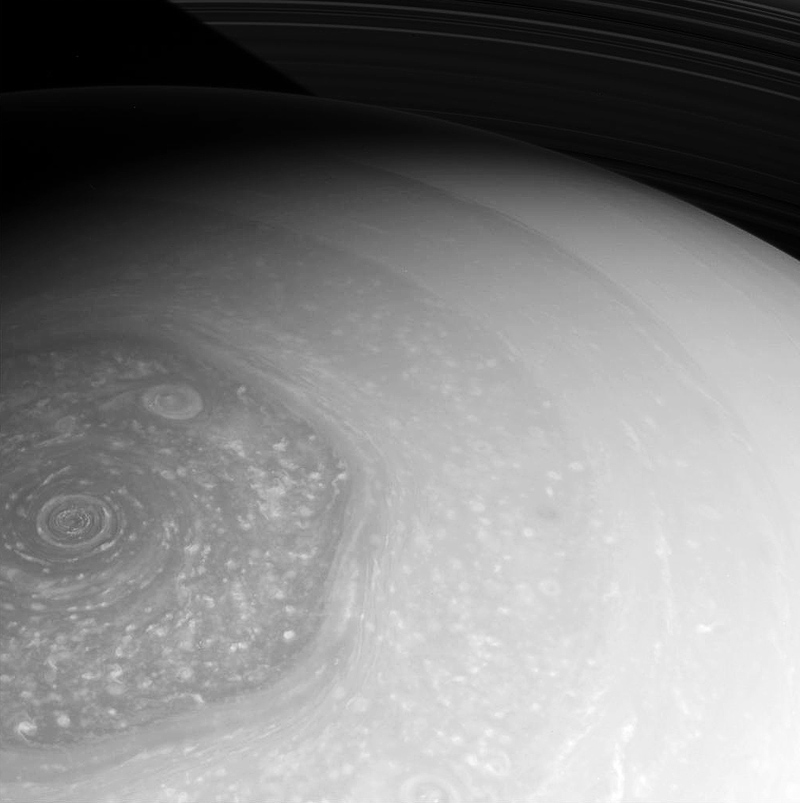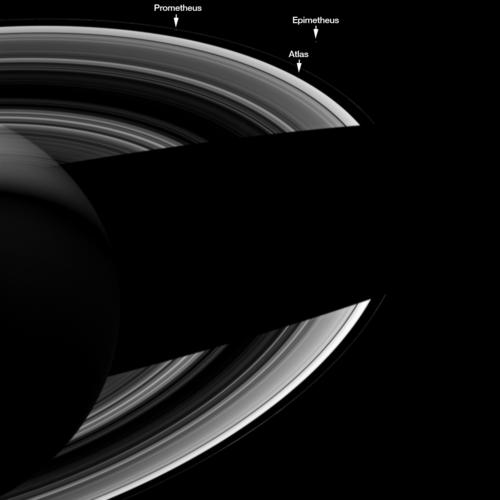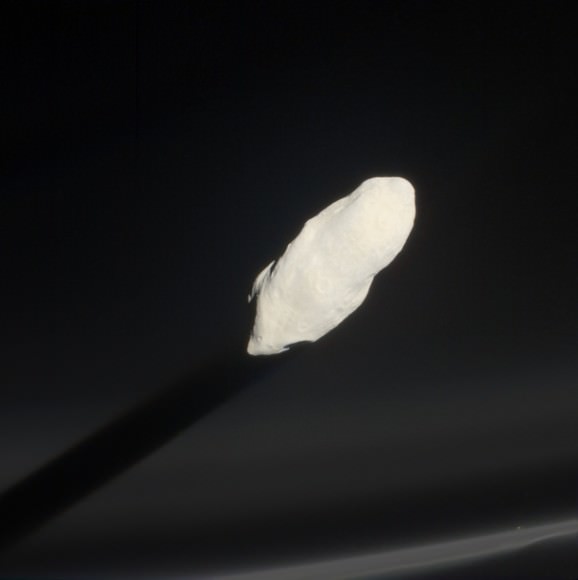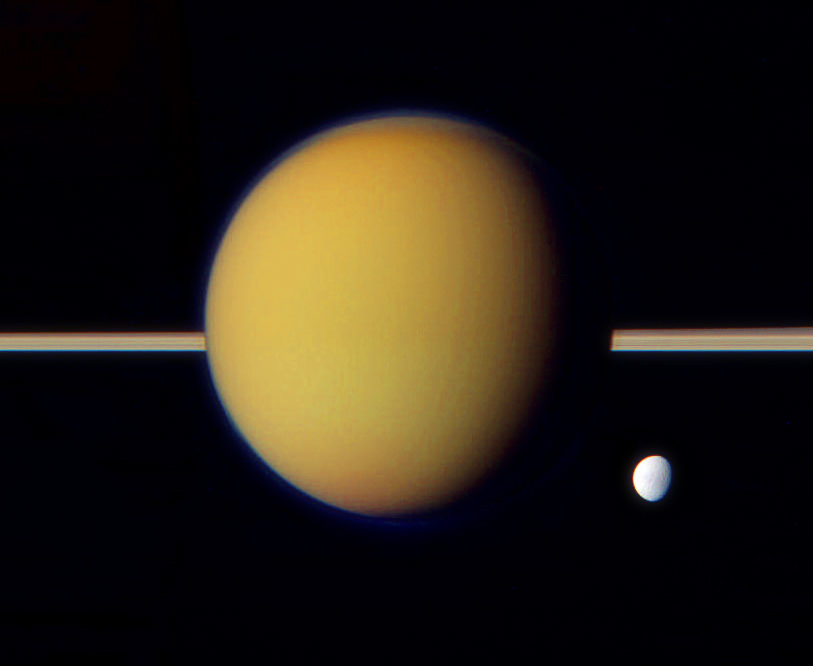Two amazing images from the Cassini spacecraft today: We know how brightly Venus shines in our own night sky; now here’s visual proof it shines brightly even in the skies above Saturn. In one image it shines so brightly that it is even visible looking through Saturn’s rings! But in this absolutely stunning shot, above, Venus appears as a morning star, just off the edge of the planet. From Cassini, you’re looking directly above the edge of Saturn’s G ring to see the white dot, which is Venus. Lower down, Saturn’s E ring makes an appearance, looking blue thanks to the scattering properties of the dust that comprises the ring. (A bright spot near the E ring is a distant star, the Cassini CICLOPS team says.)
This beautiful image was taken on January 4, 2013.
On average, Venus and Saturn are about 1,321,200,000 km (820,955,619 mi or 8.83 astronomical units) apart, so that’s a nice, long distance shot! Venus is brighter in Saturn’s skies than Earth is, however, because Venus is covered in thick sulfuric acid clouds, making it very bright.
And here’s the other great shot, showing Saturn and its rings in true color:

Venus is the white dot, just above and to the right of the image center. Again, its amazing that it shines through the rings.
This view looks toward the unilluminated side of the rings from about 17 degrees below the ring plane, and was taken in visible light (and it is a true-color image) with the Cassini spacecraft wide-angle camera on Nov. 10, 2012.
In an email about these images, Cassini imaging team lead Carolyn Porco said that even though Venus reaches nearly 900 degrees Fahrenheit (500 degrees Celsius) and has a surface pressure 100 times that of Earth’s, Venus is considered a twin of our planet because of their similar sizes, masses, rocky compositions and close orbits.
And so, she pointed out, “Think about Venus the next time you find yourself reveling in the thriving flora, balmy breezes, and temperate climate of a lovely day on Earth, and remember: you could be somewhere else!”
See more about these images at the CICLOPS (Cassini Imaging Central Laboratory for Operations) website.
















